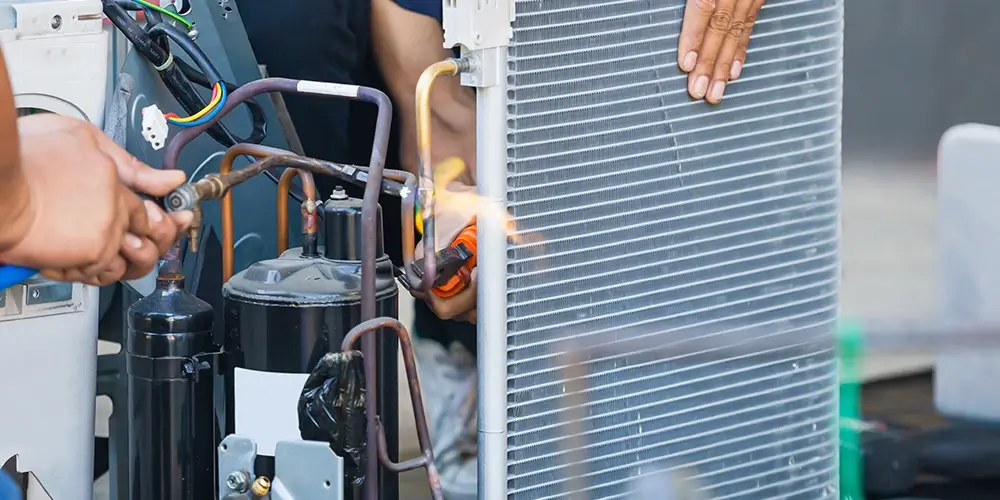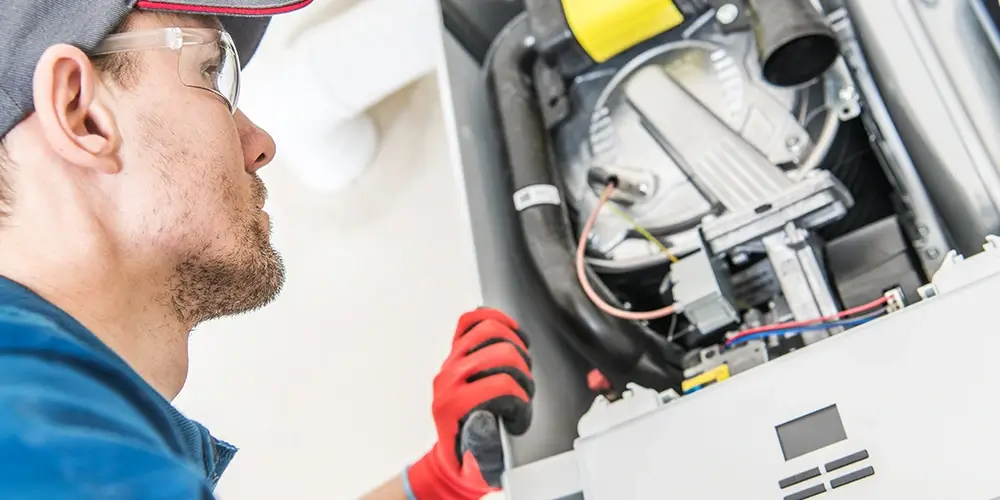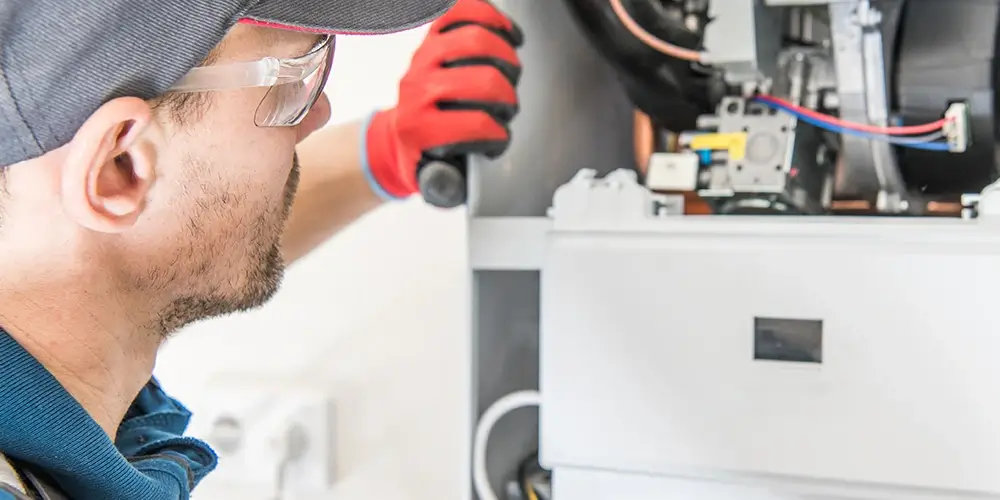Furnace & Heating Installation

West Coast Chief is an authorized dealer of trusted brands of heating equipment.
- We sell heating systems, install, and maintain them.
- We repair broken heaters and replace them if they’re old or damaged beyond repair.
- All estimates are FREE; there’s no obligation to buy. However, we’re confident that you’ll choose West Coast Chief for all your heating and cooling needs.
- We also do ductwork. Chief is a full-service, experienced, and trusted heating and air conditioning company.
Furnace Installation: A Job for Professionals
Furnace installation should never be a DIY project or job for most handymen. Only a licensed, professional technician should be trusted with modern heating and HVAC systems that may be attached to gas lines, contain complex electronics and electrical wiring, and often require ductwork.
At Chief, we specialize in heating and cooling — air conditioners, furnaces, radiant heaters, and HVAC systems. We know every system, brand, and appliance model inside and out.
Signs Your Furnace Needs Replacement
No appliance lasts forever. A refrigerator may give you 15 years of service; a furnace could last up to 20.
But if your furnace is over 15 years old and causing trouble, it may be time for replacement.
Factors include:
- The age of the appliance
- The expected appliance life
- The current level of efficiency
- The overall performance of your heating system
- The cost of repair versus the advantages of replacement
An aging furnace may need more frequent repairs as parts wear out, and it will always be less efficient than a new furnace, driving up heating bills.
Here are some clues that your furnace is approaching the end of its service life:
- Your energy bills have shot up
- The furnace makes strange noises
- The furnace doesn’t produce enough heat
- The furnace cycles on and off too frequently
- You have increasingly frequent repairs
If you’re considering a new furnace, we’ll offer an honest appraisal and help you make the best decision for your lifestyle and budget.

New Furnace Efficiency vs. Old
New furnaces are much more energy-efficient than older models. ENERGY STAR-certified furnaces are about 15% more efficient than standard models and can save you hundreds of dollars yearly on your energy bills.
In the meantime, you can improve the efficiency of your older unit by having it serviced every year and changing the filter regularly.
The Furnace Installation Pre-Check
Before we install a new furnace, we check the lie of the land.
- Do you have existing natural gas hookups? If so, you may want to take advantage of the convenience, affordability, and efficiency of natural gas.
- If you’ve installed solar panels on your roof or live in an all-electric home, then electric heating is the obvious choice.
- If you live in an older home, ductless heating installation may be the way to go.
Working with a Chief heating specialist ensures that you’ll install the right furnace for your home and budget.
Heating Systems We Install
Central Heating Systems
Central heating uses a furnace or boiler connected to ductwork to distribute heat evenly throughout your home. The furnace’s blower pushes warm air through the ductwork.
Central heating is North America’s most common heating method and is generally the most affordable option.
Ductless Heating Systems
A ductless heating system consists of an outdoor compressor and one or more indoor air handling units.
Ductless systems are ideal for older homes without existing ductwork. They also allow for zoned heat, meaning you can independently control the temperature in different areas of your home.
Upgrading to an HVAC System (Heating, Ventilation & Air Conditioning)
HVAC is an all-in-one heating, air conditioning, and filtration system connected to a network of ducts and controlled from a single thermostat or several thermostats if you prefer.
Even when it’s not directly heating or cooling air, an HVAC system can circulate air to ensure you breathe easier.
Chief’s licensed and certified technicians can help you choose the right HVAC equipment for your home, give you a free estimate (and the time you need to think it over), then install the system from start to finish with the speed, courtesy, and quality of work you expect.

Installing a Heat Pump for Energy Efficiency
A heat pump is essentially an air conditioner that also works in reverse. It moves warm air out of a building, lowering room temperatures in hot weather. In cool weather, it moves warmer air indoors, raising room temperatures.
During the summer, a heat pump operates like an air conditioner. But during the winter, unlike a furnace, a heat pump isn’t directly warming the air as much as it’s moving already warm air from one place to another.
If there’s not enough warm outside air to match your thermostat setting, that’s when the furnace kicks in — but only then. Since a heat pump uses far less energy than a furnace, the result is significant savings on your energy bill.
But the colder it gets, the less efficiently a heat pump operates. A heat pump works best when the outdoor temperature is above freezing, and even above freezing, you may have to turn on the furnace.
For moderate, dry climates like those in Southern California, a heat pump can cool or heat your home or business year-round, except on the hottest or coldest days, when you may have to operate the furnace or auxiliary AC (if you have air conditioning).
And in colder climates, a heat pump can be paired with a compatible gas furnace for more efficient heating during the chilliest part of the year.
Talk to us about installing a heat pump in your home. We don’t recommend heat pumps for every home, but a heat pump can work wonders in ideal conditions.